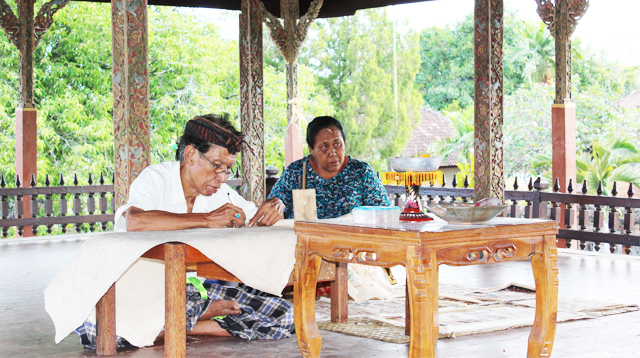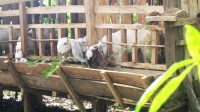- KAMASAN Village in Klungkung District has been famous for its puppet painting using natural colors.
- This distinctive art has been passed down from one generation to another. Until these days, it remains to exist and there is an effort to preserve it through painting class taught in art studios
Kamasan village in Klungkung, Bali, has its own uniqueness. Why? Well, the village which is only located 2 kilometers south of Semarapura town or Kertagosa tourist object, is the center of traditional puppetry Balinese painting.
This village is the only center of traditional classical puppet painting in Bali. According to the history of its development, this art activity began in the 17th century. Kamasan’s painting experienced a golden age during the reign of the Gelgel Kingdom of Dalem Waturenggong, grandson of Sri Kresna Kepakisan, because the king was very fond of art and culture.
Thus, the arts occupy an important and valued position. If you happen to visit Kertagosa which is a relic of the Klungkung kingdom, you can watch Kamasan-style paintings on the ceiling of the building, Kertagosa Hall and Gili Park.
Painting themes and techniques
Kamasan’s paintings consistently raise the theme of wayang stories such as the story of Ramayana, Mahabharata, Tantri and Sutasoma. Broadly speaking, the story is thick with Hinduism such as the philosophy of the law of karma and reincarnation.
Medium is used to paint from rough materials or calico cloth that was previously dipped in rice powder. Then dried in the sun to dry to cover and flatten the fabric.
When everything is ready, the painter then sketches the pictures according to the themes that have been prepared. The basic color used is light brown obtained from limestone dipped in water. After that, the limestone is eroded to produce powdered flakes, which can be used as a distinctive brownish yellow ink, which is the basic color typical of a painting.
One of the names of the legendary Kamasan painters at that time was Mahodara. He is seen as a legend figure that first popularized the classic wayang painting of Kamasan.
The regeneration of Kamasan painting continues from the following century. During the transition period of the 18th to 19th centuries, there were names of popular Kamasan painters such as I Rambug (1850-1925) and his son Nyoman Dogol (1875-1963). In the next era, there is Nyoman Dogol’s nephew, I Nyoman Mandra (1945-2018). He learned a lot from the uncle.
The figure of the late I Nyoman Mandra is known for sharing his knowledge in order to preserve the classical puppet art of Kamasan through his singing. It can be said that almost all Kamasan puppet painters in Kamasan Village are currently educated by Nyoman Mandra.
If you do not have time to make a visit to Kamasan Village to see how to paint Kamasan classic puppets, take advantage of your time when visiting Kerta Gosa, right the heart of the Smarapura town. When operating normally (before the Covid-19 pandemic), every day there was a demonstration of the typical kamasan style. There is an artist sketching while another coloring it. This activity is carried out in turns by the Kamasan Village artists themselves.
So, after looking at Kamasan’s classic paintings at pavilion of Kertagosa, you also have the opportunity to witness firsthand how to paint at Taman Gili floating pavilion next to it. Uniquely, the ceiling of the pavilion is also decorated with typical Kamasan-style paintings.











